#ancient denmark
Explore tagged Tumblr posts
Text
I'm fascinated by the ritual destruction of weapons.
10 notes
·
View notes
Text
While you’re thinking about the Roman Empire, I’m stuck on the Danish Swan Wing burial and probably will be forever.
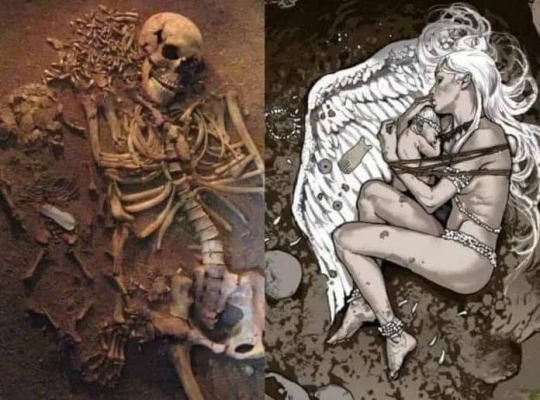
art credit: Adam Brockbank
15 notes
·
View notes
Text

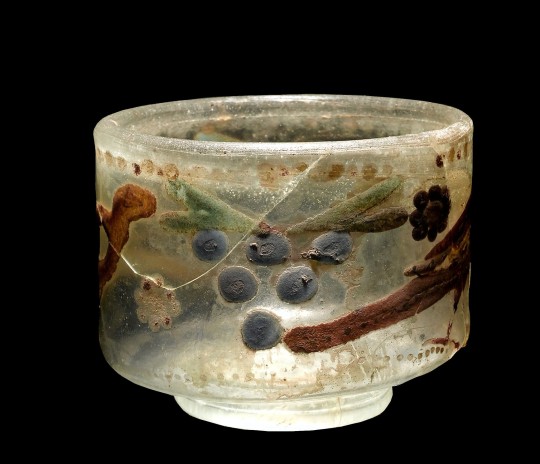


~ Circus cup decorated with flowers and birds
Place of origin: Varpelev, Denmark
Period: Roman
#ancient#ancient art#history#museum#archeology#ancient history#archaeology#roman#glassware#circus cup#denmark#varpelev
8K notes
·
View notes
Text





Curved Swords from Western Zealand, Denmark dated to 1550 BCE on display at the National Museum of Denmark in Copenhagen, Denmark
These two bronze swords are though to have been left as a sacrifice in a bog in Rørby, Western Zealand in the 16th century BCE. They were made in Scandinavia and are decorated with images of ships on the blades. The curve of the blade is shaped similar to the silhouette of ships of the time, resembling the ship prow. Due to the complexity of their design and where they were found it is unlikely they were made for warfare.
Photographs taken by myself 2018
#sword#art#military history#archaeology#ancient#bronze age#denmark#danish#national museum of denmark#copenhagen#barbucomedie
152 notes
·
View notes
Text
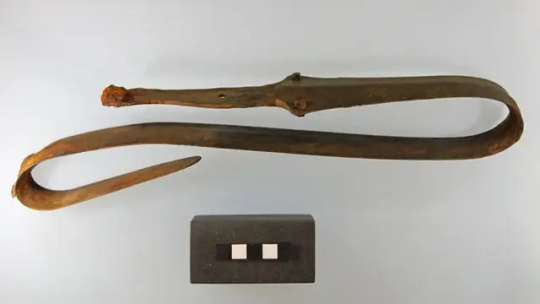
Ritually Bent Bronze Age Sword Found in Denmark
The sword, which has iron rivets in its handle, may be one of the earliest iron artifacts found in Denmark.
A metal detectorist has unearthed a long, bronze sword that was bent into an S shape during an ancient ritual in what is now Denmark.
The sword and other artifacts — which were found in a bog near Veksø, northwest of Copenhagen — date to about 2,500 years ago, during the late Bronze Age. They are thought to have been part of a ritual sacrifice, although this practice was no longer common at that time. Upon discovering the artifacts, the metal detectorist notified the Danish museum group ROMU.
"It's what I would describe as a very rare find," excavation leader Emil Winther Struve, an archaeologist and curator with ROMU, said in a translated statement.

Although such items were often deposited in bogs as sacrifices during the early and middle Bronze Age in northern Europe, "We don't know that many from the latter part of the Bronze Age," he said. However, the practice of sacrificing or killing people in bogs — leaving behind remains known as "bog bodies" — spans a longer period, from the Stone Age to the 19th century.
Ritual sacrifice
In addition to the bent sword, archaeologists found other Bronze Age artifacts, including two small, bronze axes; several large, bronze "ankle rings"; and what may be a fragment of a needle, according to the statement.
A few days later, the archaeologists also discovered a large, bronze "neck ring" just 230 feet (70 meters) away. The neck ring is only the second of its kind found in Denmark, and the archaeologists think from its style that it was imported from what's now the Baltic coast of Poland.

Bronze Neck Ring
The bronze sword's handle contains two iron rivets that may be the earliest iron ever found in Denmark. The ROMU statement described the sword as "almost a physical manifestation of the transition from the Bronze Age to the Iron Age."
The sword's design suggests it was not made in Denmark but rather in more southern parts of Europe that were dominated by the Hallstatt culture during the Bronze Age, the statement said. The Hallstatt culture thrived from about the eighth to the sixth centuries B.C. and was influenced by Europe's early Celtic culture.
The ritually bent sword was a genuine weapon and indicated a transition from more lightweight swords used mainly for stabbing, Struve said, "but now they are becoming tougher, more solid and have a different weight, so you can use them more violently and for chopping."
The Hallstatt culture had a warrior ideal that demanded conquest, war and conflict. "The sword is perhaps an image of that," Struve said.
By Tom Metcalfe.

#Ritually Bent Bronze Age Sword Found in Denmark#bronze#bronze sword#metal detecting#ancient artifacts#archeology#archeolgst#history#history news#ancient history#ancient culture#ancient civilizations#bronze age
185 notes
·
View notes
Text


David is absolutely sticking his arse out more than necessary in that first pic, and I am at peace with that...
#david tennant#soft scottish hipster gigolo#rex is not your lawyer#big twink energy#tell me you've had gay sex without telling me you've had gay sex#even the ancient Greeks are looking at this right now like 'Dude...'#also god help us all if Michael ever sees these pictures#there's something slutty in the state of Denmark#and giving off major bottom vibes#and it's David Tennant#amazing
317 notes
·
View notes
Text
Fun fact: Unlike most other ancient pantheons, the Nordic Gods have exactly zero instances of direct familial incest

#nonask#denmark#admiralen#fact#nordic gods#norse gods#norse is an antiquated term that should not be used#but the rest of the world hasnt really discovered that so im putting it in the tags#anyway#shoutout to the following:#ancient greek gods#lookin at you zeus#ancient egyptian gods#ancient kemet#most of the old roman gods also#sumerian gods#babylonian gods#all of the mesopotamian deities basically#also i believe ancient chinese gods#and ancient japanese gods most definitely#i mean most of them didnt have much choice true#but some of them DID have options#they just chose not to make use of them#so good work nordic gods for keeping up that genetic diversity
239 notes
·
View notes
Text

Various Bronze Treasures
i was scrolling archives like one does and i like so many objects so why not put them together :)
Neck Ring - 64706 Animal Figure - 489308 Knife - 64535 Knife Fragment - 63866 Metalhookthing - 528893 Tutulus - 207510
#Bronze age#archaeology#illustration#denmark#bronze#ancient history#at least i think theyre all or mostly bronze age#its not dated very specifically in their archive so some may be later#also tried to make them about proportional to each other#my art
33 notes
·
View notes
Text

Valdemar the Great is Imprisoned in Absalon's Mother's House, Where He has Sought Refuge After the Attack in Roskilde
Artist: Peter Raadsig (Danish, 1806-1882)
Date: 1821-1840
Medium: Oil on canvas
Collection: SMK - Statens Museum for Kunst, Copenhagen, Denmark
Valdemar I of Denmark
Valdemar I Knudsen (14 January 1131 – 12 May 1182), also known as Valdemar the Great (Danish: Valdemar den Store), was King of Denmark from 1154 until his death in 1182. The reign of King Valdemar I saw the rise of Denmark, which reached its medieval zenith under his son King Valdemar II.
King Valdemar ended the chaos of the civil war and rallied the Danes to attack the Slavic tribes in Northern Germany, who had long had free rein to rob and pillage on the south-facing coasts and the small islands, from which they had abducted thousands of Danes as slaves. He conquered Rügen, which from ancient times belonged to Denmark.
Nominally, the ancient electoral monarchy still existed, but he introduced the custom of the Valdemars that reigning kings had their eldest sons elected co-kings and successors while they were still alive. There can be no doubt that Valdemar believed that the open principle of the electoral monarchy was to blame for the 26 years of civil war.
On the whole, Valdemar never forgot the civil war. He zealously struck down any sprout of opposition, which were his former support in the civil war, Buris Henrikssøn, Erik Lam's son, Magnus Erikssøn, and not least Archbishop Eskil.
Valdemar preferred Absalon as archbishop because he had known him all his life, and he knew that as long as he got enough income, he would be loyal and not create theological or political problems in relation to the king, as other archbishops had done.
#historical scene#valdemar i of denmark#artwork#interior#absalon's mother#men#women#ancient history#danish history#table#chairs#royal robes#knight#cross#textiles#drapery#helmet#boots#robes#king#cloak#conversation piece#narrative art#history painting#painting#oil on canvas#fine art#oil painting#danish culture#danish art
9 notes
·
View notes
Text
And another incredible find of a woman in an unexpected place.
6 notes
·
View notes
Text

Kylix, man vomiting, Brygos or Dokimasia Painter
Man vomiting, a boy holding his forehead. Tondo of an Attic red-figured kylix (type B) attributed to near the Brygos Painter or to the Dokimasia Painter. From Italy. Nationalmuseet, København, Danmark.
#kylix#red figured#nationalmuseet#københavn#danmark#brygos painter#dokimasia painter#italy#italia#potery#greek potery#attic potery#attic kylix#red figured potery#red figured kylix#vomiting#ancient art#greek art#attic art#red figured art#copenhagen#kopenhagen#denmark#dänemark#copenhague#dinamarca#art#history#arte#kunst
7 notes
·
View notes
Photo
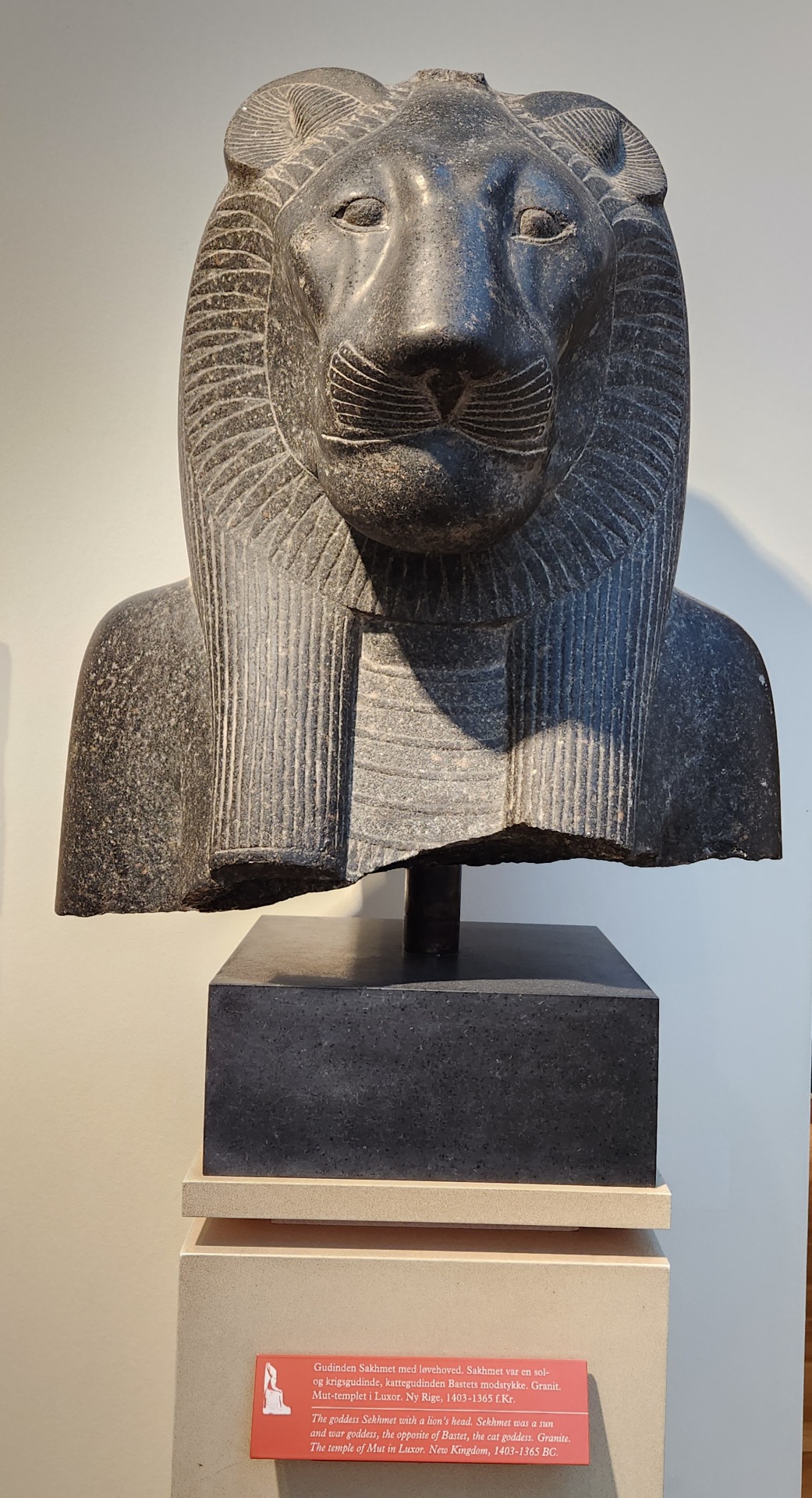
The goddess Sekhmet with a lion’s head.
Sekhmet was a sun and war goddess, the opposite of Bastet, the cat goddess.
Granite.
The temple of Mut in Luxor.
New Kingdom, 1403-1365 BC
National Museum of Denmark, Department of Classical and Near Eastern Antiquities
#history#denmark#national museum of denmark#history museums#museums#history museum#museum#ancient egypt#new kingdom egypt#new kingdom egypt artifacts#ancient egypt artifacts#historical artifacts#sekhmet
147 notes
·
View notes
Text
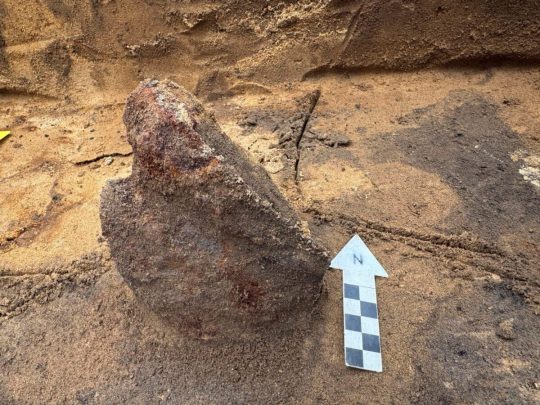
Rare 4th Century Roman Helmet and Chainmail Found in Denmark
Archaeologists have recently unearthed a massive stockpile of weapons near Hedensted, Denmark, buried 1,500 years ago by an ancient chief. In addition to many weapons and unique chainmail, fragments of a Roman helmet from the 4th century have also been found.
During recent archaeological excavations at Løsning Søndermark in Hedensted, Denmark, a significant discovery has been made that sheds light on the region’s Iron Age history, dating back 1,500 to 2,000 years. Archaeologists unearthed a burial site containing an extensive array of weapons, sufficient to equip a small army, alongside a remarkable chainmail shirt and other valuable artifacts. This find suggests that the site belonged to a powerful chieftain, and the manner of the burial indicates that these war implements may have been offered to higher powers.
The excavation was prompted by the Danish Road Directorate’s ongoing project to expand the motorway to three lanes, leading to the unearthing of these extraordinary artifacts just northwest of Hedensted, situated between Vejle and Horsens.

Some of the half-buried weapons found in Løsning
In addition to the extensive weapon deposits, archaeologists have discovered two unusual iron plates, each approximately the size of a human palm. Initially, the origins of these plates were uncertain. However, through the application of X-ray imaging technology, conservators and archaeologists were able to penetrate the thick layers of rust that obscured the objects.
The imaging results revealed an extraordinary and rare discovery: the remnants of a Roman helmet. The two plates identified consist of a neck guard and a intricately decorated cheek guard, which are components of a crest helmet—a type commonly utilized during the 4th century within the Roman Empire.

The illustrations show the placement of the neck and cheek guard on a Roman helmet. The top of the helmet has not been found, so its appearance remains purely speculative
Finds of Roman helmets from the Iron Age are exceptionally uncommon in southern Scandinavia, and this particular discovery lacks direct parallels within the region. The few comparable artifacts have been located at Thorsbjerg Moor in Schleswig, as well as in southern Sweden and Gotland, with no similar finds recorded in Denmark itself.

An X-ray scan shows the fragments of an ancient Roman helmet found in Løsning
In addition, a chainmail shirt was discovered at Løsning Søndermark. Only a very small number of chainmail shirts from the Iron Age have been found in the southern Scandinavian region. Notably, the chainmail unearthed at Løsning Søndermark is particularly remarkable as it is the first instance found in association with a settlement, rather than being recovered from a burial site or bog.
The production of chainmail required specialized expertise, access to resources, and a considerable, sustained effort. Consequently, these expensive pieces of armor were owned exclusively by the highest echelons of the warrior elite in society, underscoring their status and importance.

The ancient chainmail shirt found in Løsning
In addition to the extensive weapon sacrifice, archaeologists have uncovered fragments of two highly distinctive bronze neck rings at the Løsning Søndermark site. These rings exhibit striking similarities to imagery found on gold bracteates from the Vindelev Hoard, as well as other representations of Iron Age rulers.
The motif of a ring-bearer holding an oath ring in one hand, symbolizing power and influence, is a well-established theme in Nordic imitations of Roman gold medallions and gold bracteates. It is likely that the rings discovered at Løsning Søndermark served a similar function and may have been integral to the chieftain’s personal equipment, alongside the chainmail, sword, horse gear, and other military items that were part of the sacrificial offerings.

Two ring fragments found in Løsning
Notably, the ring-bearer depicted on the Vindelev bracteates is also adorned in a garment featuring an unusual pattern, which may represent chainmail akin to that found at Løsning Søndermark.
Starting Saturday, February 8, 2025, selected items from this remarkable find, including fragments of a Roman helmet, will be exhibited at the Cultural Museum in Vejle, providing the public with an opportunity to engage with Denmark’s rich archaeological heritage.
By Oguz Buyukyildirim.

Some of the swords and other weapons found in Denmark
#Rare 4th Century Roman Helmet and Chainmail Found in Denmark#Løsning Søndermark#Hedensted Denmark#roman military equipment#ancient artifacts#archeology#archeolgst#history#history news#ancient history#ancient culture#ancient civilizations#iron age#roman history#roman empire
36 notes
·
View notes
Text

This is a horned helmet found in Denmark, but it and others like it turned out to date to c. 900 BC, many centuries before Vikings, and these may well have been used for religious purposes (my speculation would be shamanic, but I have no direct evidence for this), rather than in battle.
#Viksø helmets#Denmark#history#archaeology#historical#Antiquity#ancient#helmet#horns#Veksø#Bronze Age#Danish
22 notes
·
View notes
Text
Mythtalia March
Decided to make another list for inspiration!
Mythological Ships:
-Odysseus & Penelope
-Apollo & Hyacinthus
-Apollo & Daphne
-Pygmalion & Galatea
-Helen & Paris
-Hades & Persephone
-Achilles & Patroclus
-Aphrodite & Ares
-Aphrodite & Hephaestus
-Dionysus & Ariadne
-Heracles & Megara
-Odin & Frigg
-Loki & Angrboda
-Frey & Gerd
-Thor & Sif
-Svarog & Lada
Again, none of these are obligations, this is just for the sake of possibly giving people ideas!

@hetaliahappenings @heta-on-the-books @nsfhetalia @hetaliacalendar
#hetalia#hws#hetalia events#hws events#nyotalia#aph#hws america#nyo england#hws greece#hws england#hws rome#hws ancients#hws norway#hws russia#hws belarus#hws nordics#hws denmark#hws italy#hws romano#hws ukraine#hws sweden#hws france#hws hungary#hws prussia#hws lithuania#hws japan#hws china
33 notes
·
View notes
Text










Exihibition about Ancient Egypt on Moesgaard Museum, Denmark. Such a fascinating time in history. And they were so far ahead compared to the rest of the world during that time. When they built the pyramids, we still lived in caves here in Europe
6 notes
·
View notes